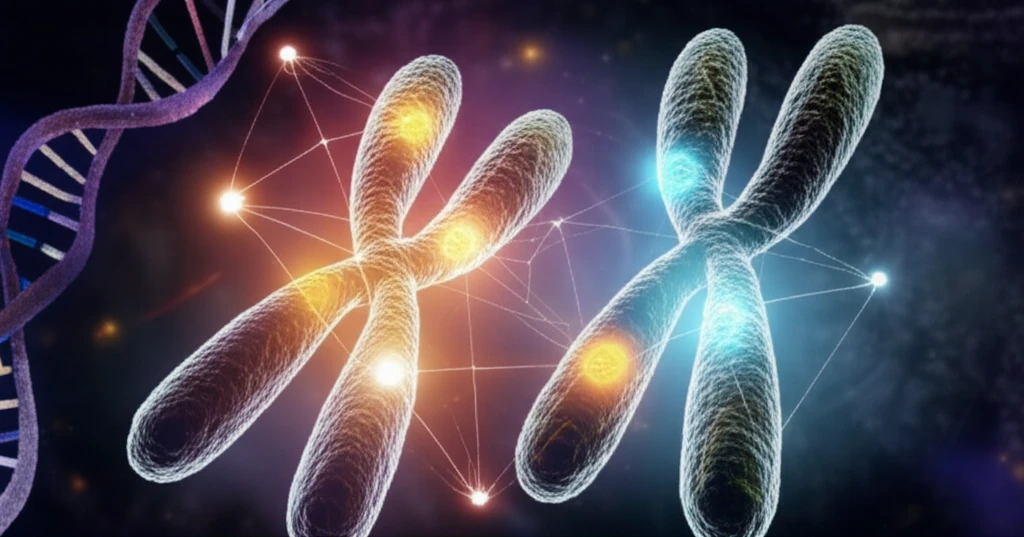
Decoding Cell Division: How SPICE1 and Aurora Kinases Ensure Accurate Chromosome Segregation
"Unlocking the secrets of mitotic regulation through computational biology and kinase substrate identification"
Cell division, or mitosis, is a fundamental process for life, ensuring growth, repair, and reproduction. This process depends on the accurate segregation of chromosomes, orchestrated by a complex interplay of proteins and enzymes. Mitotic kinases, a small group of enzymes, drive this precise choreography by phosphorylating hundreds of proteins. Errors in this process can lead to chromosomal instability, a hallmark of cancer and other developmental disorders.
Among the key players in mitosis are the Aurora kinases, a family of serine/threonine kinases crucial for maintaining genomic stability. These kinases, particularly Aurora A and B, control various mitotic events, from spindle assembly to chromosome condensation. Understanding how Aurora kinases function requires identifying their downstream targets and the mechanisms by which they regulate these targets.
Recent research has focused on identifying novel Aurora kinase substrates using a computational approach that combines phosphorylation site clustering, protein localization, protein structure, and species conservation data. One particularly promising substrate identified through this method is SPICE1 (Spindle and Centriole Associated Protein 1), a protein implicated in centriole duplication, spindle organization, and chromosome alignment.
What is SPICE1 and Why Is It Important for Cell Division?

SPICE1 is a protein associated with the centrioles and spindle, essential structures for organizing the microtubule network that separates chromosomes during mitosis. Proper regulation of SPICE1 is critical for maintaining the correct number of centrioles, ensuring proper spindle architecture, and aligning chromosomes accurately. Disruptions in SPICE1 function can lead to severe consequences, including abnormal centriole numbers, multipolar spindles, and misaligned chromosomes.
- Centriole Duplication: Ensuring each daughter cell receives the correct number of centrioles.
- Spindle Organization: Establishing a bipolar spindle to accurately segregate chromosomes.
- Chromosome Alignment: Facilitating proper attachment of chromosomes to microtubules.
The Future of Mitotic Research: Leveraging Computational Tools
This research underscores the power of computational approaches in identifying critical mitotic substrates. By combining bioinformatics with experimental validation, researchers can rapidly identify and characterize new targets of Aurora kinases and other mitotic regulators. The development of database-search tools that enable rapid identification of Aurora kinase substrates will accelerate the pace of discovery in this field, leading to a deeper understanding of cell division and its implications for human health. Further studies are necessary to dissect the mechanism of SPICE1 in centriole and spindle function.
